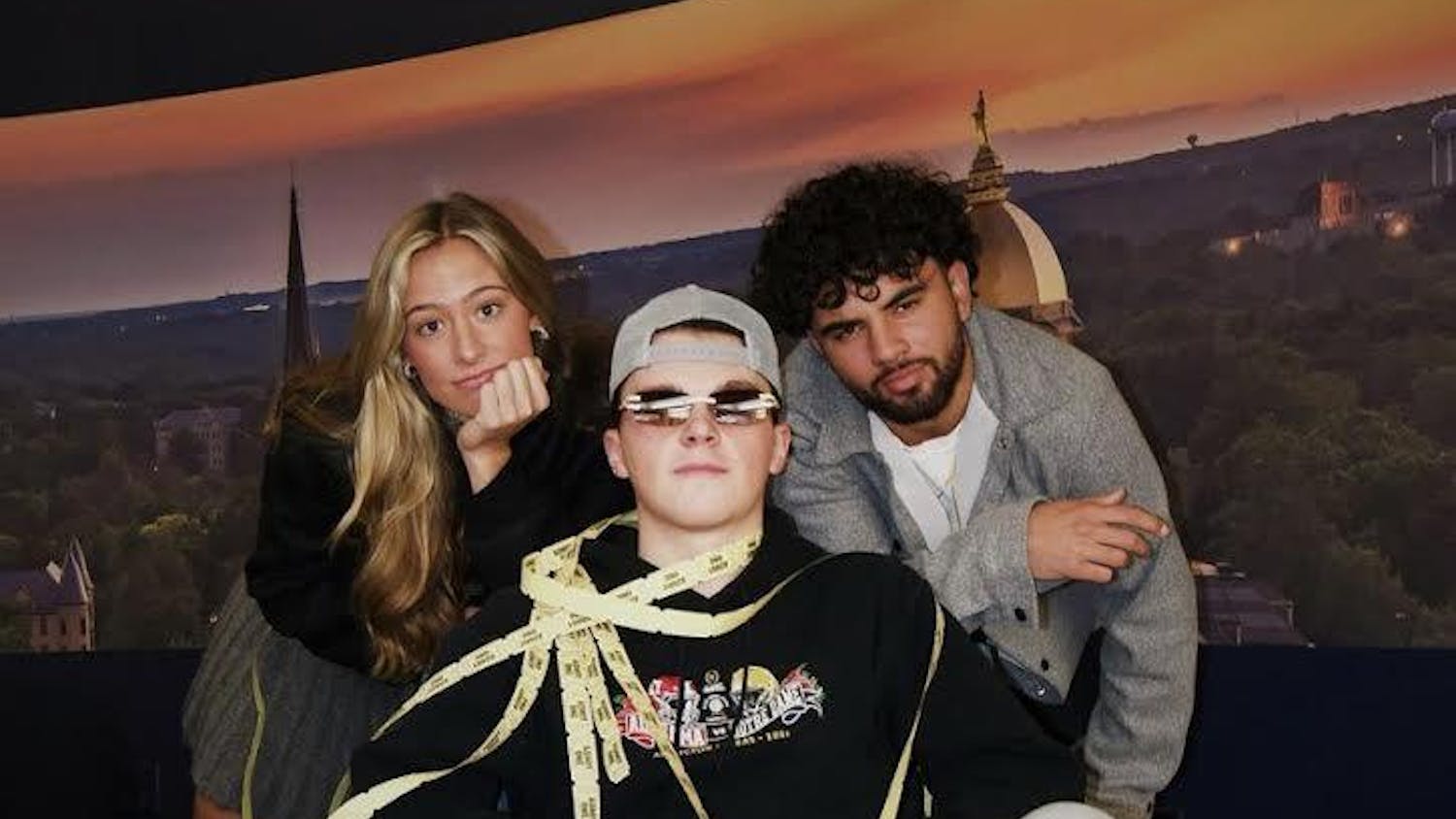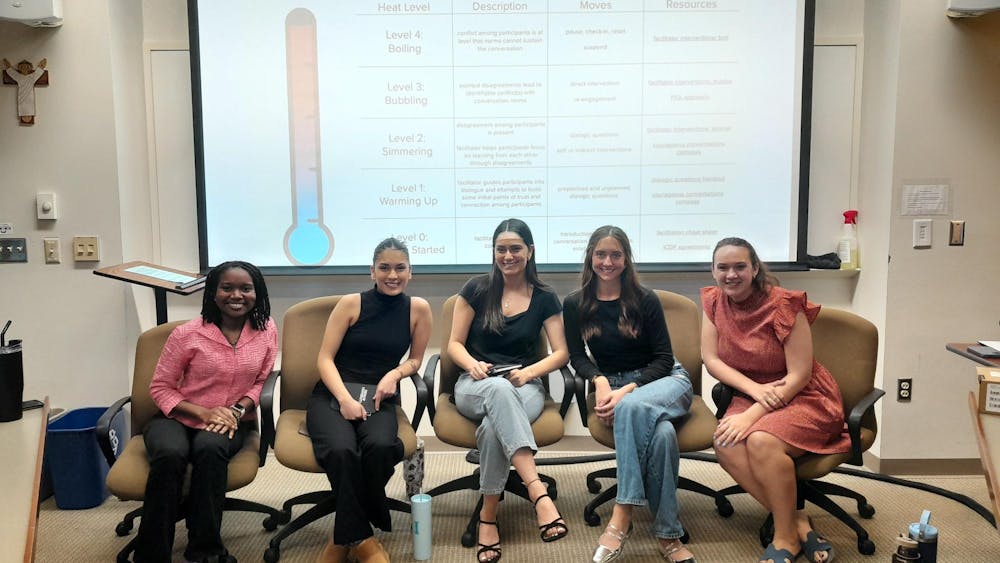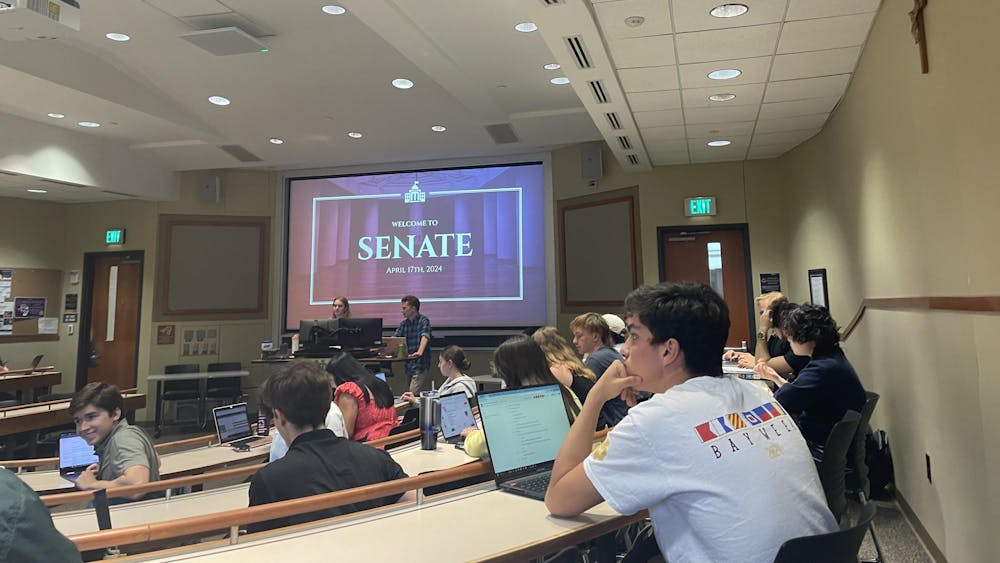Spanish classes at Notre Dame do not take place exclusively in the classroom.
Since 2010, the department for romance languages and literatures together with the Center for Social Concerns (CSC) has offered various community-based learning (CBL) Spanish courses, in which students participate in service in the South Bend community to complement what they learn in the classroom.
“The people that [Notre Dame students] are working with in the community not only put a face to the numbers and to the stories — which is something that we’ve heard over and over again from the students — but [they] make it very real and very personal, and it gives a sense of urgency or importance to what it is they’re learning,” Rachel Parroquin, the director of Spanish CBL courses at Notre Dame, said. “It really inspires them to do something.”
Parroquin said in each CBL course, a class of Notre Dame students partners with a specific organization. Students attend class meetings in a traditional classroom setting in addition to spending a minimum of 10 hours doing service with their partner organization.
“That’s really where the power of the pedagogy comes in — combining the experiential with the academic content,” she said.
The program has grown since the introduction of the first CBL course in 2010, Parroquin said, and various teachers in the department of romance languages and literatures have piloted classes aimed at encouraging student engagement with the community.
Associate professional specialist Maria Coloma is teaching the CBL course being offered this fall, in which students are traveling to Washington High School to mentor local high school students.
Sophomore Geralyn Smith, who is currently taking Coloma’s class, said relationship-building is a key component of the course.
“It is about focusing on their academics and helping them with school, but we also want to foster a relationship, which is why we’re paired with them,” she said. “So it’s about helping them with school but it’s also about being kind of a mentor, someone they can look up to.”
Smith said the course marks a significant departure from her other classes, which dedicate a majority of their time to academics.
“With this class, we discuss real issues that are affecting the Latino community, and that’s a big change,” she said. “Because it’s not just about me academically, it’s not about me growing academically, it’s also about me growing socially and being able to play a part in and have an impact on a community that’s not my own.”
Senior Zach Wiley, who is also enrolled in Coloma’s course, said the service component of the course enables students to better understand the academic content taught during class meetings.
“It’s real world,” he said. “In a lot of my science classes, you have the lecture and then you have the lab, and Spanish classes are pretty much just lecture. This [course] is sort of like a lab component.”
The interactive nature of CBL courses also helps students understand complex topics and improve language skills through conversation with native speakers, senior Ray’Von Jones, who has previously taken three CBL courses, said.
“The thing about CBL courses is they add another dimension to what you’re learning,” Jones said. “You learn theories in class, you learn things in a more abstract way, [but] then once you’re in contact with the community it’s easier to connect the dots, and it kind of brings the theory to life.
“ … I overcame a huge threshold when I started taking my first community-based class. Because it’s one thing to learn Spanish and speak it in class — it’s more scripted — but to be talking with people? It’s a lot more difficult, and it’s a quicker, more efficient way to learn a language.”













